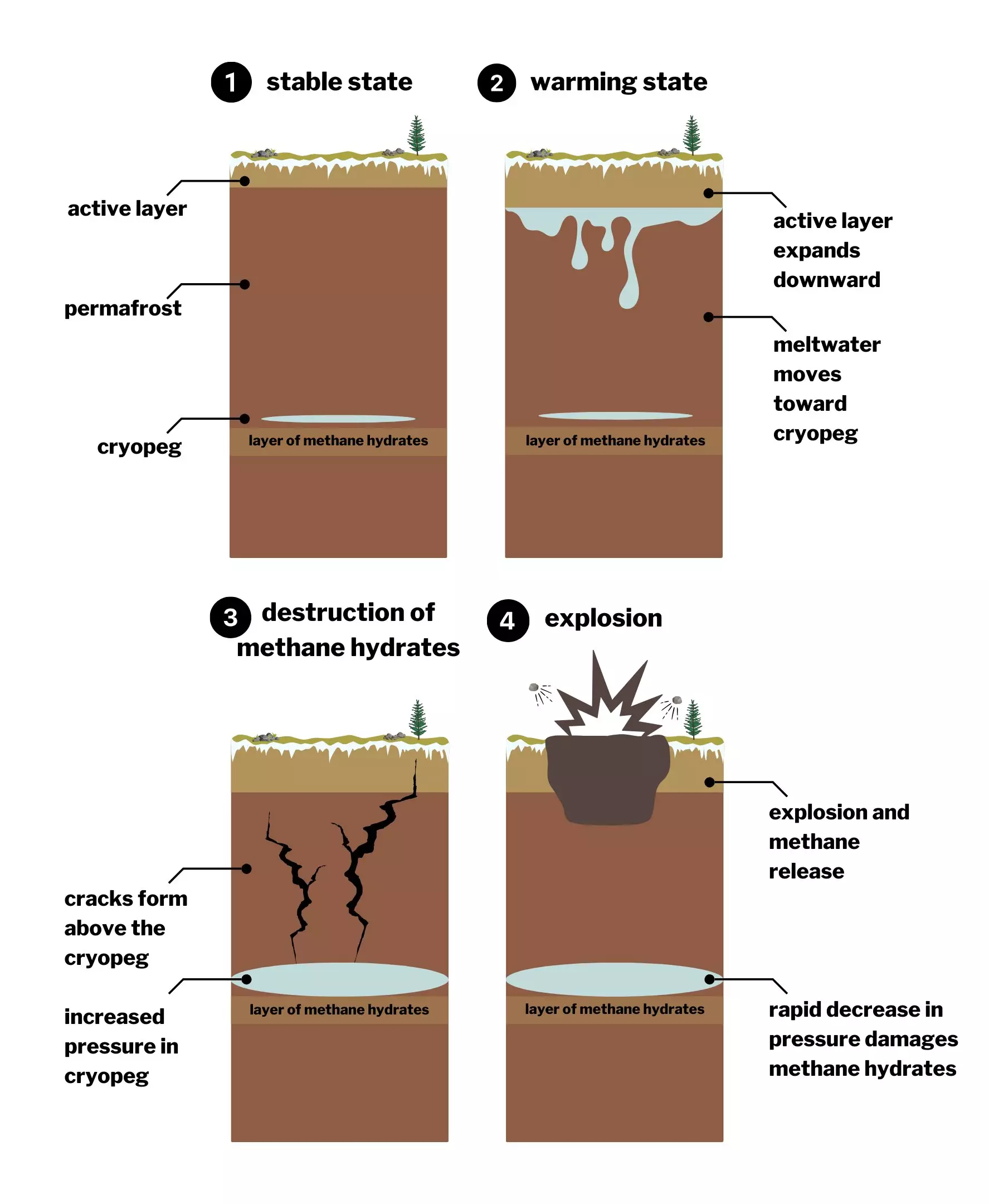In 2014, the scientific community was astounded by the sudden appearance of large craters in the Siberian permafrost, particularly on the Yamal Peninsula. These enigmatic formations, some reaching approximately 70 meters (230 feet) in diameter, sparked a myriad of hypotheses regarding their origin. As researchers delved deeper into the phenomenon, it became apparent that these explosive events were more than mere geological curiosities; they were symptomatic of broader climatic shifts. A recent study elucidates the mechanisms behind these craters, positing that they are the result of intricate interactions between warming climates and the peculiar geological attributes of the region.
The craters’ formation was attributed to the explosive release of methane gas, previously trapped in methane hydrates within the permafrost. This study underscores that the causes are far more complex than simply the thawing of permafrost alone. Ana Morgado, a chemical engineer from the University of Cambridge and co-author of the study, emphasizes the specificity of the conditions required for such explosions. While many explanations had been circulated over the years—ranging from methane gas accumulation due to the melting of permafrost to the vicinity of natural gas deposits—the findings indicate that a perfect storm of geological and climatic factors is essential for triggering these explosive phenomena.
Morgado and her colleagues undertook an investigative approach similar to that of detectives piecing together fragments of an intricate puzzle. The research posed fundamental questions regarding the explosions: Were they chemical in nature, or were they driven by physical processes? As Julyan Cartwright, a geophysicist at the Spanish National Research Council, noted, only two mechanisms could lead to explosions. Upon examining the available evidence, it became clear that a chemical source did not account for these eruptions. Instead, the researchers identified a physical cause rooted in the unique properties of the region’s thick permafrost.
The underlying mechanism hinges on osmosis—an inherent property of fluids to move toward an equilibrium concentration. In this case, the Yamal Peninsula’s permafrost acts as an osmotic barrier, and the warming climate exacerbates the situation. The intricate layering of the permafrost, along with the presence of cryopegs (areas of high-salinity water), plays a crucial role in facilitating the buildup of pressure in anticipation of an explosive release of gas.
The Yamal Peninsula features a multi-layered geological composition, with a thick permafrost layer underlying a seasonal active layer that thaws and refreezes. Beneath this ice lies another layer of unfrozen salty water, stable due to its unique pressure and salinity characteristics. Below the cryopegs, crystallized methane hydrates are present, existing in a precarious equilibrium maintained by the harsh environmental conditions.
However, as climate change disrupts these delicate balances, the active layer expands downward, leading to the generation of meltwater that infiltrates the cryopegs through osmotic pressure. The unintended consequence of this process is a gradual build-up of pressure. Eventually, this mounting pressure forms cracks that propagate toward the surface, signaling the imminent risk of an explosive methane release. The culmination of this pressure change results in eruptions that can be decades in the making—a striking correlation with the climate warming trends that began in the late 20th century.
As highlighted in the study, the conditions for such explosive events are relatively specific to the Yamal Peninsula. While methane hydrate dissociation is not an uncommon occurrence globally, the interplay of climate change and the region’s geology creates a unique framework that facilitates these sudden eruptions. Morgado warns that each event is a clear indicator of the dramatic shifts taking place in the Arctic due to climate change.
While these explosions offer a poignant glimpse into the unintended consequences of global warming, they also serve as a reminder of the intricate и interconnected systems that govern our planet. Understanding and recognizing these changes is crucial for creating appropriate responses to mitigate risks tied to climate change, particularly in sensitive environments like the Arctic.
The findings surrounding the mysterious craters of the Yamal Peninsula not only contribute to our understanding of geological phenomena but also underscore the urgency of addressing climate change. With many unexplored territories still holding secrets about our planet’s dynamic nature, further research is essential. As scientists continue to unravel the complexities of these occurrences, the potential implications on global ecosystems and climate necessitate our full attention. The Yamal Peninsula’s craters remind us that beneath the delicate interplay of natural forces lies a reality that demands vigilance and understanding amid an ever-changing world.


Leave a Reply